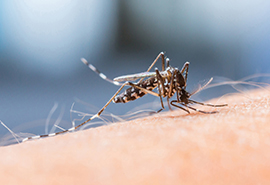
Insect Bites and Stings
Insect bites are common and usually not severe. Symptoms are allergic reactions to the venom injected into the skin. Mostly, the reactions would be mild such as itching or light swelling. The severity of the reaction depends on the sensitivity to the substance injected. Not many people have severe reactions. Typically the most troublesome bites are from the likes of bees, hornets, and fire ants.
Self-Care for bites with mild reactions:
- Find a safe area far from the insects.
- If the stinger remained post-bite, scrape it off with a straight-edged object, such as the back of a knife. Do not use tweezers, they may squeeze the venom sac and increase the amount of venom released.
- Wash the bitten area with soap and water.
- Place ice (wrapped in a washcloth) on the site of the sting for 10 minutes. Repeat this process.
- If necessary, take an antihistamine containing diphenhydramine (e.g. Benadryl) or apply creams that reduce itching. You can use calamine lotion or a baking soda (3 teaspoons baking soda to 1 teaspoon water).
When to Contact a Medical Professional?
Call for emergency medical assistance if the following severe reactions occur:
- Swelling on the face, lips or throat
- Difficulty breathing
- Abdominal and localized pain
- Shock
- Turning blue
- Feeling weak
- Dizziness
- Confusion
- Rapid heartbeat
- Hives
- Some reactions could be delayed, causing fever, hives, painful joints and swollen glands
- Nausea, intestinal cramps, diarrhea
What to do while waiting for help?
- Don't give anything to drink.
- Do not apply a tourniquet or give the person stimulants, aspirin, or other pain medication unless prescribed by the doctor.
- Check for special medications that the person might be carrying to treat an allergic attack, such as an auto-injector of epinephrine (for example, EpiPen) and administer it as directed. After epinephrine, if the person is able to swallow give them an antihistamine pill.
- Have the person lie still on his or her back with feet raised and keep them calm.
- Make the person comfortable by loosening tight clothing and covering him or her with a blanket.
- To prevent choking if there's vomiting or bleeding from the mouth turn the person on his or her side.
- Check for breathing and pulse, if there are no signs of circulation begin CPR.


